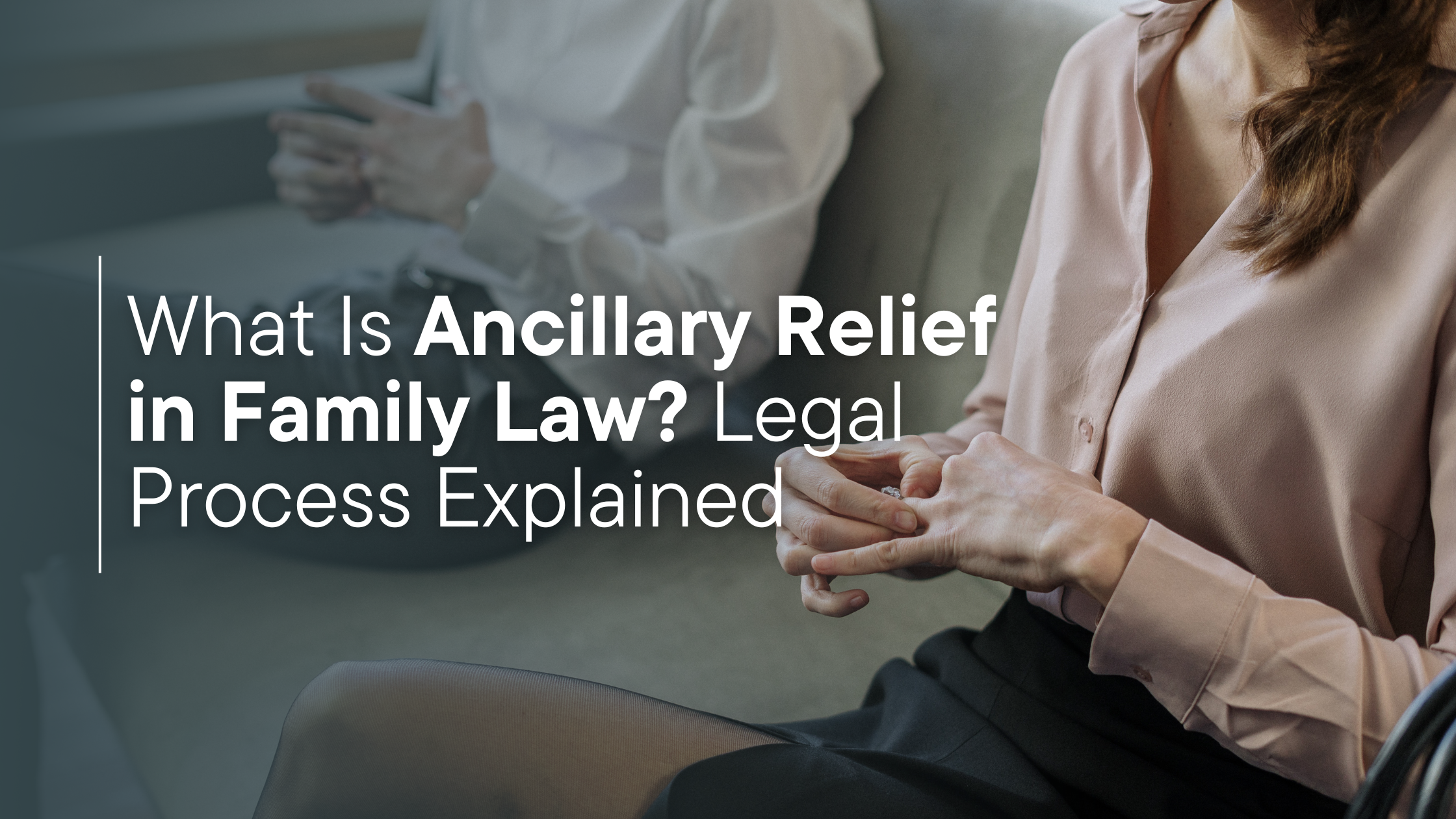Navigating family law can be emotionally and financially challenging. When couples separate or divorce, there are often complex legal matters to address. One of these critical aspects is ancillary relief, a legal term that refers to the financial arrangements that need to be made between separating parties. If you’re facing a divorce or separation, understanding ancillary relief can help you prepare for what lies ahead and ensure that your financial interests are protected.
In this post, we’ll explain what ancillary relief is, the process involved, and how it can impact your case.
What Is Ancillary Relief?

Ancillary relief refers to the financial relief or arrangements granted by a court to resolve issues arising from divorce or separation. It involves securing fair financial support for both parties and children involved, covering aspects like property division, spousal maintenance, and child support.
While divorce or separation legally ends a marriage or relationship, ancillary relief ensures that both parties are supported and provided for financially during and after the process. Without it, spouses and children might be left without a fair arrangement for their financial future.
The Legal Basis for Ancillary Relief

In family law, the legal framework governing ancillary relief varies by jurisdiction. However, the general principles remain consistent.
Key Legislation: In many jurisdictions, such as the UK, the Matrimonial Causes Act 1973 governs the granting of ancillary relief. In the United States, the laws differ by state, but the underlying goal remains the same: ensuring fair financial settlements.
Who Can Apply? Ancillary relief can be requested by spouses, civil partners, and sometimes, even unmarried couples, if they have financial claims to be settled.
Factors the Court Considers: When determining what type of relief is appropriate, the court looks at various factors, including:
- The length of the marriage or relationship
- Each party’s contributions (both financial and non-financial)
- The financial and non-financial needs of both parties
- The standard of living during the marriage or relationship
- The age and health of the parties involved
The Ancillary Relief Process

Navigating the ancillary relief process involves several key steps, from application to final judgment. Here’s an overview of what to expect.
Step 1: Initial Application
The process begins when one party applies to the court for financial relief. This application typically includes details about both parties’ financial situations and any necessary documents, such as tax returns, bank statements, and asset valuations.
Step 2: Financial Disclosure
Both parties are required to provide full and accurate financial disclosures. This ensures transparency and fairness in the proceedings. Failing to disclose financial information can significantly impact the outcome of the case.
Step 3: Mediation and Negotiation
Before heading to court, it’s common for parties to attempt mediation or negotiation. Mediation is a way to resolve financial disputes without litigation, with a neutral third party guiding the discussions. This step can save time, money, and emotional stress.
Step 4: Court Proceedings
If mediation fails, the case moves to court. In a court hearing, both parties will present their financial information, and a judge will decide the division of assets and any maintenance payments. The court will aim to ensure that the arrangements are fair and equitable.
Step 5: Final Orders
Once the court reaches a decision, a final order is made. This could include orders related to property division, spousal maintenance, child support, and more. It is essential to comply with these orders, as failure to do so can lead to legal consequences.
Types of Ancillary Relief Orders
There are several types of orders a court may grant in an ancillary relief case, depending on the specifics of the case. Common orders include:
- Property Division: The court may order the division of the family home, investments, or other properties acquired during the relationship.
- Spousal Maintenance: A spouse may be entitled to ongoing financial support, depending on their financial needs and the standard of living during the marriage.
- Child Maintenance: The court can establish child support payments to ensure that both parents contribute to the children’s financial needs.
- Pension Sharing: In some cases, pensions are shared between the parties to ensure both have financial security in retirement.
- Transfer of Property: In certain circumstances, the court may order one spouse to transfer property to the other.
Common Disputes in Ancillary Relief Cases

While ancillary relief aims to provide fair and equitable financial support, disputes often arise, including:
- Financial Disclosure Disputes: One party may fail to fully disclose their financial situation, leading to mistrust and delays in the process.
- Disagreements Over Property Division: Deciding who gets what can lead to significant disagreements. The court will consider various factors, but the process may still be contentious.
- Enforcement of Orders: If one party refuses to comply with the court’s order, enforcement measures may need to be pursued, which can add to the complexity of the case.
The Role of Lawyers and Financial Advisors in Ancillary Relief

Navigating the ancillary relief process is not something you should face alone. Both family lawyers and financial advisors can play a crucial role in achieving the best possible outcome:
- Family Lawyers: Experienced family law attorneys provide expert guidance throughout the process, ensuring your rights are protected and that the legal proceedings go smoothly.
- Financial Advisors: In complex cases, financial experts can help assess the full scope of your assets, advise on the fair division of property, and ensure that your financial future is secure.
Together, these professionals can help you achieve a resolution that works for you and your family.
How to Prepare for Ancillary Relief Applications

Proper preparation is key to ensuring the ancillary relief process runs smoothly. Here’s what you can do:
- Gather Financial Documents: Collect bank statements, tax returns, investment records, and any other relevant financial documentation.
- Consider Mediation: Before going to court, explore mediation options. It’s often quicker, less expensive, and less stressful.
- Understand Your Rights: Familiarize yourself with the relevant family law in your jurisdiction to understand your rights and entitlements.
Conclusion
Ancillary relief plays a crucial role in ensuring that financial arrangements are fair and equitable during a divorce or separation. While the process can be complex, understanding the basics can help you navigate it with greater confidence.
If you’re considering applying for ancillary relief, contact Barli & Associates LLC today. Our team of experienced family law professionals is here to provide the guidance and support you need. Let us help you protect your financial future and ensure a fair resolution.
Schedule a Consultation Today
Contact us at Barli & Associates LLC to discuss your case and explore how we can help you navigate the ancillary relief process with clarity and confidence.
Phone: 973-638-1101
Email: [email protected]





